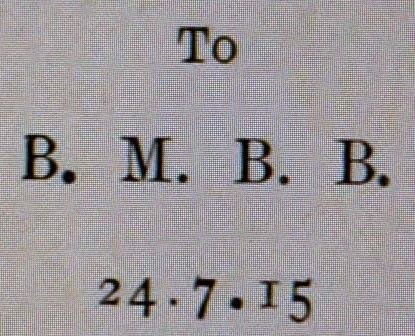Trench’s Manoeuvre Orders 1914 is
today a forgotten book. Its instructions on the conduct and organization of a
modern army on the eve of the Great War seem antiquated a century after its
first publication. But as a training manual for young officers it was much in
demand in its time. By 1915 it had gone
through 11 editions.
Its
author, Colonel Frederick John Arthur Trench CVO, DSO, Knight Commander of the
Orders of the Royal Crown, of the Red Eagle, and of Saxe-Ernestine had had a
distinguished service career, having been appointed Military Attaché at Berlin from
1906 to 1910.
In 1915 it was being edited by an army officer who was just as noted for his military service as the book’s author. Brigadier General Bernard Montague Bateman, born in 1865, had been educated at Wimbledon School before entering the Royal Military Academy, Woolwich; he was gazetted into the Royal Artillery in July 1884 and had served in the Boer War with distinction. From March 1915 he served in the Great War with the Heavy Artillery on the Western Front.
He would go on in 1916 to be
created CMG and appointed Brigadier-General. In 1917 he was created an officer
of the Légion
d'Honneur, being three times mentioned in despatches. In December 1919 he
retired from the army and settled with his wife Alice Maude, née Hinkson, in Budleigh Salterton, living at
Southbrook, on West Hill. He died at a London nursing home on 15 March1937. Alice
Maude Bateman died two years later in Budleigh Salterton, on 12 Oct 1939.
The trenches today: Sanctuary Wood, a few miles east of Ypres, in Belgium © Mo Sandford FRPS 2014
More of Mo Sandford's remarkable
photos of World War I battlefields can be seen here
The author Michael Morpurgo has described her work as "deeply moving and
interesting."
But in June 1915 he was based in
Belgium, defending the Ypres Salient. So also was his only son, 24-year-old Bernard
Montague Basil Bateman, a Lieutenant serving with the 133rd Battery, 21st Brigade
of the Royal Field Artillery
at Sanctuary Wood, near Ypres.
The award of the Military Cross had been created only a year previously, on 28 December 1914
The father would no doubt have
been quick to learn the news that the younger Bernard's bravery under fire had resulted in
his being awarded the Military Cross. However he was devastated to hear that the
young officer had been injured. The citation made mention of the Lieutenant’s “conspicuous gallantry” on 10 June, when young Bernard was “dangerously wounded in
endeavouring to restore telephone communication under very severe fire.”
Sadly young Bernard did not recover from his wounds.
Sadly young Bernard did not recover from his wounds.
His father was working on the
12th edition of Trench’s Manoeuvre
Orders 1914 when he received news of the death of Lieutenant Bateman on 24
July.
And that is why the 12th edition
which appeared in 1916, published by William Clowes, is dedicated to
B.M.B.B. 24.7.15
The book is available to read online here
Lieutenant Bateman’s body was
brought back to Britain, where his mother Alice Maude was the informant of his
death, registered in Lambeth.
His ashes are at Golders Green
Crematorium in London, as are those of his father Brigadier General Bateman who
would die 22 years later.
‘The Great War at Fairlynch’ 2015 exhibition at Budleigh Salterton’s very special museum! Reviews included: “Wonderful display on WW1, informative, bright and relevant. Well done!!




























